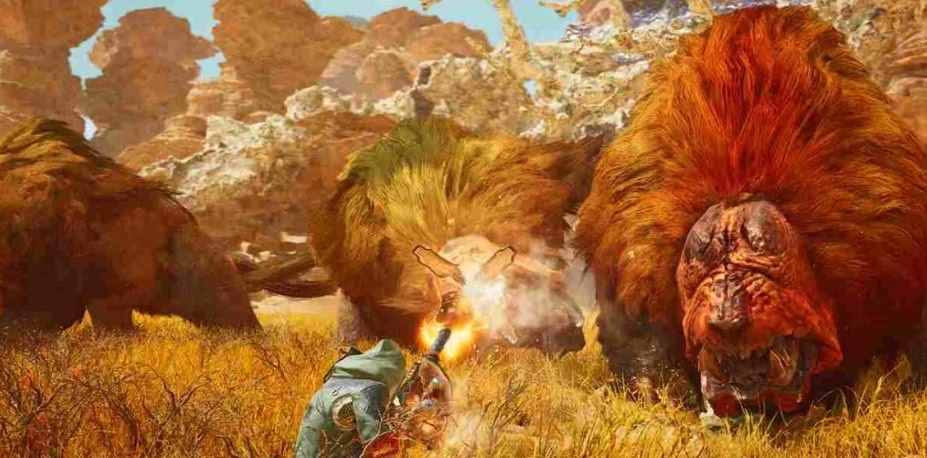Monster Hunter Wilds is an epic adventure that’s been derailed by a frustrating technical nightmare: graphics artifacting. If you’re watching your dream hunt dissolve into a kaleidoscope of visual glitches, you’re not alone. Wait—this isn’t just an annoyance. These graphical gremlins can transform your immersive experience into a pixelated disaster.
What Exactly is Graphics Artifacting in Monster Hunter Wilds?
Graphics artifacting isn’t just a minor inconvenience. We’re talking about full-screen distortions, flickering textures, and color glitches that transform your hunting landscape into a seizure-inducing light show. Imagine tracking a rare monster, only to have your screen explode into a abstract art piece—not exactly the epic battle you signed up for.
The Brutal Reality of Visual Bugs
Players across the gaming community are reporting near-unplayable conditions. Screen tearing, bizarre texture warping, and sudden visual breakdowns are blocking visibility and shattering the meticulously crafted world of Monster Hunter Wilds. But here’s the good news: we’ve compiled a comprehensive battle plan to exorcise these digital demons.
Proven Fixes for Monster Hunter Wilds Graphics Artifacting
1. GPU Driver Management: Your First Line of Defense
Pro tip: The February 27 Nvidia driver update is a potential minefield. If you’re rocking an NVIDIA GPU, hit pause on that update. Stick to the last stable driver version released before this problematic patch. Sometimes, the newest isn’t always the greatest.
2. Frame Generation and VRAM: Surgical Precision Settings
Graphics settings aren’t just decorative—they’re your strategic toolkit. Here’s what to do:
- Disable Frame Generation, especially if you’re using an RTX 4000-series GPU
- Monitor VRAM usage during cutscenes
- If you see a VRAM warning, start reducing graphic settings incrementally
3. Mesh Quality: The Unexpected Savior
Believe it or not, one simple tweak might be your salvation. Reducing Mesh Quality to Medium has been a game-changer for many players. Head to the in-game graphics settings, locate Mesh Quality, and drop it to Medium. Apply, restart, and watch those artifacts potentially vanish.
4. Software Conflicts: The Silent Culprits
Overclocking and monitoring software can wreak havoc. Here’s your cleanup protocol:
- Completely disable MSI Afterburner before launching the game
- Close all similar performance monitoring applications
- If the artifacts disappear, you’ll need to keep these tools disabled during gameplay
5. Upscaling Technology: DLSS vs. FSR Showdown
Not all upscaling methods are created equal. Some players report:
- DLSS triggering more artifacts
- FSR providing a cleaner visual experience
Switch your Upscaling Method from DLSS to FSR in the graphics settings. It might just solve your artifacting nightmare while potentially improving image quality.
6. Adaptive Sync: A Potential Problem Zone
Screen flickering driving you mad? Your adaptive sync technology might be the villain:
- AMD users: Disable FreeSync
- NVIDIA users: Turn off G-Sync
- Use your GPU control panel (AMD Adrenalin or NVIDIA Control Panel)
- Restart the game and assess the improvement
7. NVIDIA Reflex: Handle with Caution
NVIDIA Reflex can introduce additional instability. Navigate to the Graphics tab in game settings and disable it. This might reduce artifacting and stabilize your visual experience.
The Road Ahead: Community and Developers
While these workarounds offer hope, the gaming community and developers are actively tracking this issue. An official patch is likely in development to comprehensively address these graphics artifacts.
Conclusion: March 26, 2025
Graphics issues can be frustrating, but Monster Hunter Wilds is too incredible to let technical hiccups steal your experience. Try these fixes methodically, document what works for your specific setup, and stay connected with the gaming community.
Pro Gamer Tip
Keep your drivers updated, but also be strategic. Sometimes, waiting a few weeks after a major driver release can save you from being an unintended beta tester.

